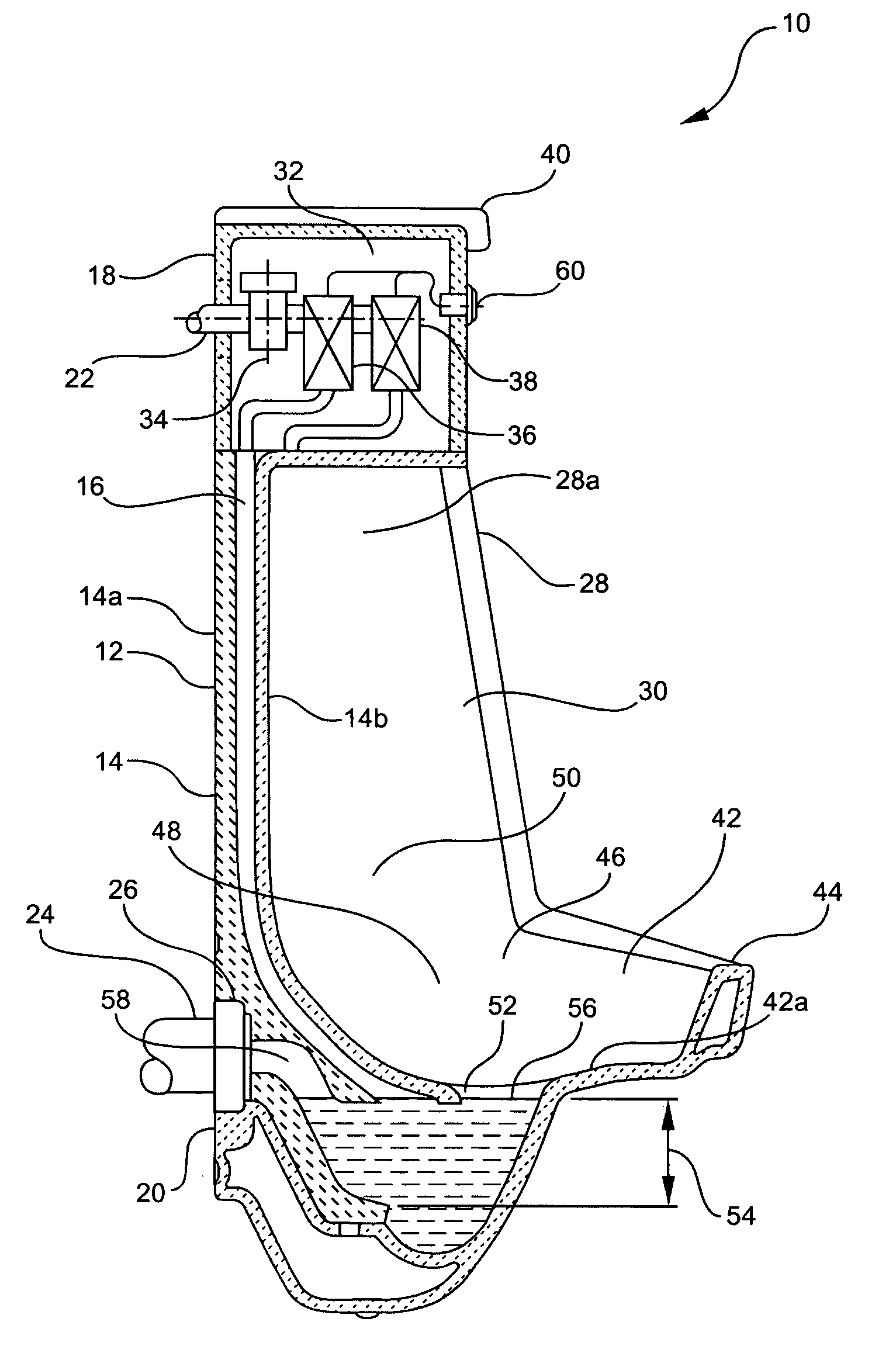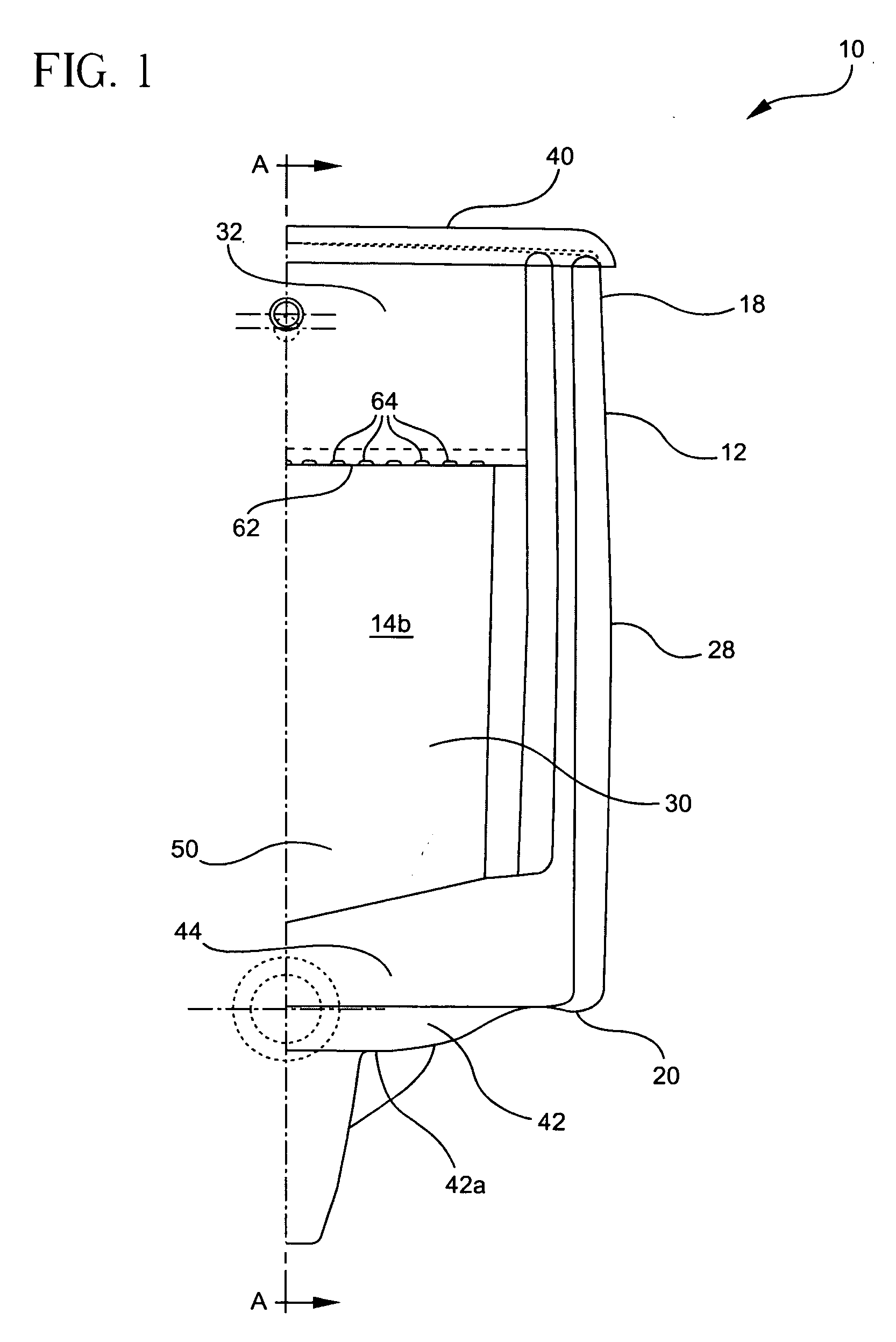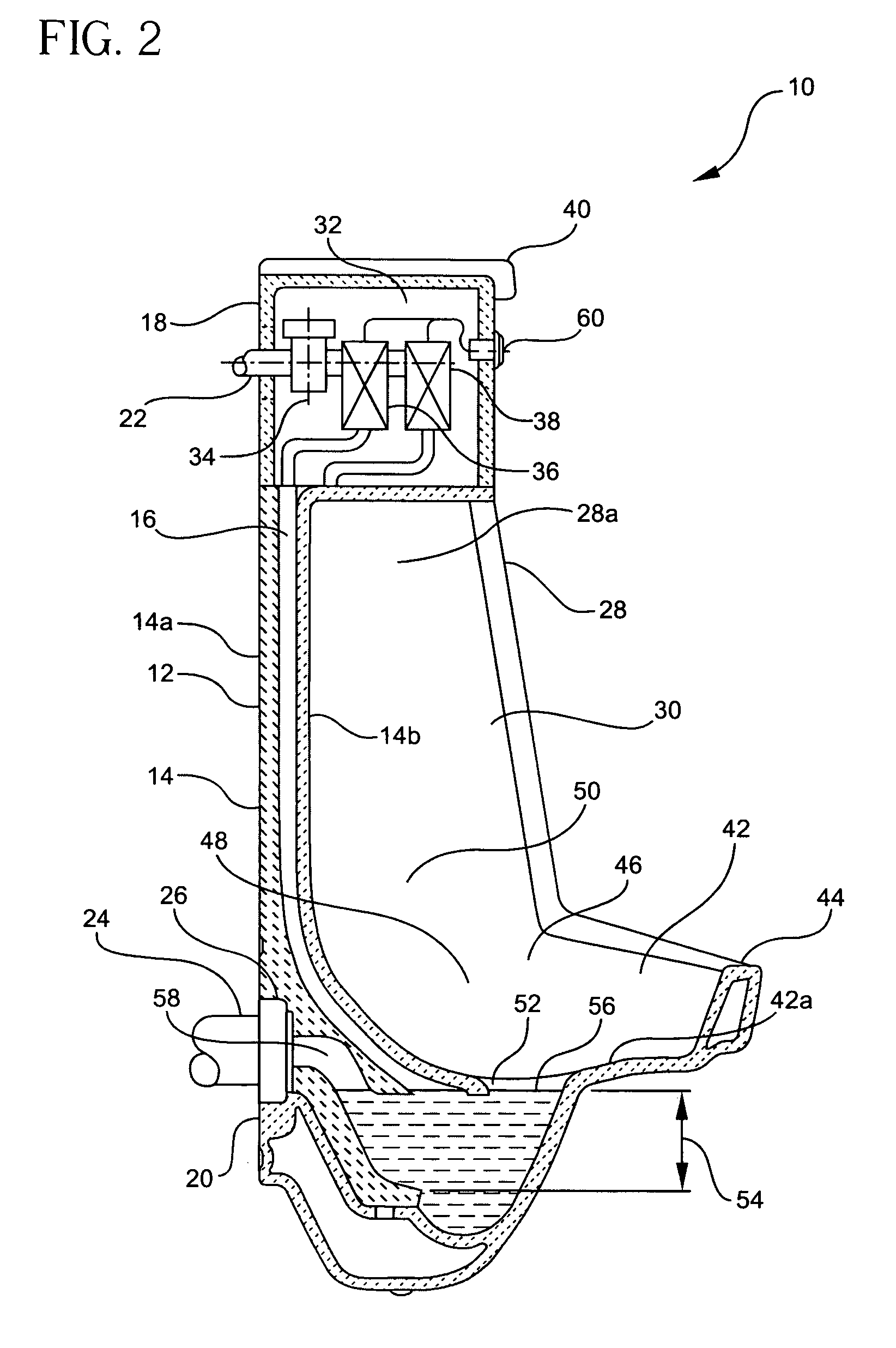Dual phase flush urinal
a flushing urinal and dual-phase technology, applied in the field of sanitaryware, can solve the problems of affecting the quantity and affecting the quality of suitable water, and affecting the quality of suitable water, and achieve the effects of overcoming the deficiencies of waterless urinals, sufficient sanitary conditions, and simple installation and maintenan
- Summary
- Abstract
- Description
- Claims
- Application Information
AI Technical Summary
Benefits of technology
Problems solved by technology
Method used
Image
Examples
Embodiment Construction
Now referring to the figures and particularly referring to FIG. 1, a urinal 10 of the present invention desirably comprises an integral chinaware fixture 12. Fixture 12 may also be fabricated from plastic, stainless steel or any other material that is amenable to practice of the present invention. Fixture 12 may have one or more treatments applied thereon to enhance the urinal's performance. Such treatments may include coatings or glazes having one or more of hydrophobic, hydrophilic, anti-microbial, antibacterial, biocidal, odor suppressing, anti-viral and algicidal properties. Such coatings are well known within the industry to promote the cleanliness of plumbing fixtures and deter the transmission of undesirable contagions thereby.
Fixture 12 includes a rear wall 14 (shown in FIG. 2) having a mounting surface 14a for mounting of the urinal to a support structure such as a wall and a urinal surface 14b facing the user that serves as a splash surface for the urinal. Intermediate mo...
PUM
 Login to View More
Login to View More Abstract
Description
Claims
Application Information
 Login to View More
Login to View More - R&D
- Intellectual Property
- Life Sciences
- Materials
- Tech Scout
- Unparalleled Data Quality
- Higher Quality Content
- 60% Fewer Hallucinations
Browse by: Latest US Patents, China's latest patents, Technical Efficacy Thesaurus, Application Domain, Technology Topic, Popular Technical Reports.
© 2025 PatSnap. All rights reserved.Legal|Privacy policy|Modern Slavery Act Transparency Statement|Sitemap|About US| Contact US: help@patsnap.com



